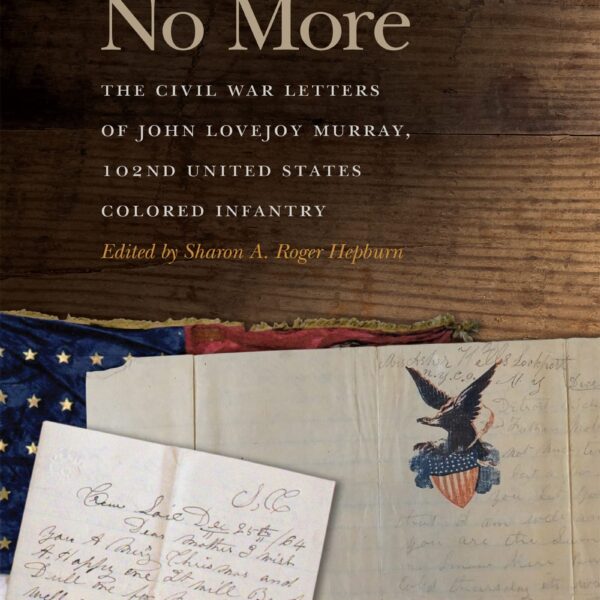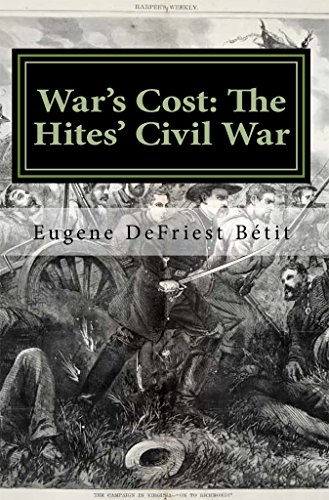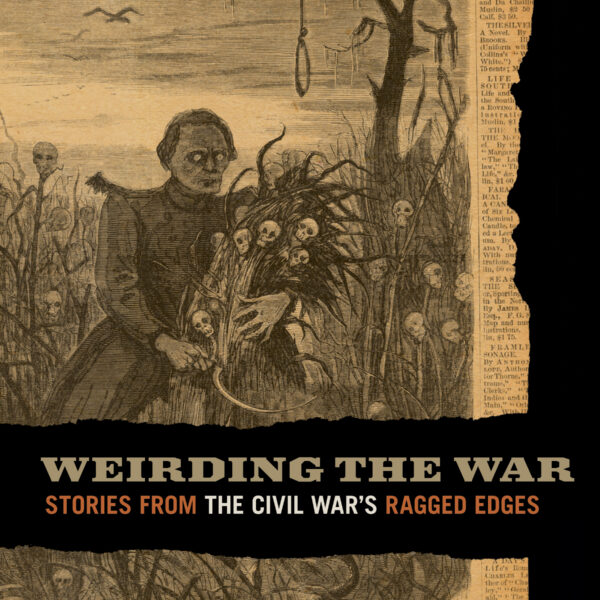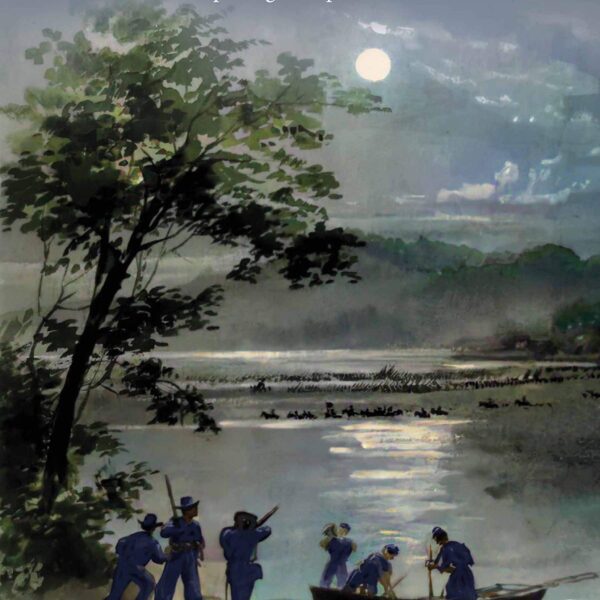Uncommonly Savage: Civil War and Remembrance in Spain and the United States by Paul D. Escott. University Press of Florida, 2014. Cloth, ISBN: 978-0813049410. $74.95.
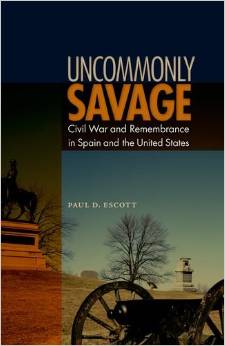 The tendency to compare elements of the nineteenth century United States with other countries is not exclusive to modern historians. Fire-eaters, for example, frequently made comparisons with other countries, as well as with the North (think of their many pungent denunciations of the “isms” plaguing northern society, a comparison designed to tout the alleged superiority of the South). Indeed, nineteenth century Americans drew comparisons far more frequently than many people today realize.
The tendency to compare elements of the nineteenth century United States with other countries is not exclusive to modern historians. Fire-eaters, for example, frequently made comparisons with other countries, as well as with the North (think of their many pungent denunciations of the “isms” plaguing northern society, a comparison designed to tout the alleged superiority of the South). Indeed, nineteenth century Americans drew comparisons far more frequently than many people today realize.
To some extent, historians have followed in their footsteps. Historians of slavery such as Frank Tannenbaum, Stanly Elkins, and Stanley Engerman have seen the value of comparing slavery in the United States with other countries, and Peter Kolchin skillfully juxtaposed slavery in the United States with serfdom in Russia. Shearer Davis Bowman and Enrico dal Lago analyzed elites and compared southern planters with Prussian Junkers and landowners in pre-unification Italy, respectively. And Eric Foner, Steven Hahn, Thomas Holt, Frederick Cooper, and Rebecca Scott have each offered intriguing comparative analyses of postemancipation societies.
The problem with some of the recent comparative studies—particularly the works discussing comparative postemancipation societies—is that they focus on a small group of countries (Brazil, Cuba, Jamaica, and the United States). Thus, the late Eugene Genovese’s comment that “the comparative method, while now reputable, remains on the defensive and has not yet passed much beyond comparison of the Old South with other slave societies” is a good statement of the state of the field, despite having been made a quarter of a century ago. That is not to dismiss the important insights that such studies provide; yet, particularly in an era when many historians are entranced by the promises of transnational history, focusing on such a narrow cast of countries to the exclusion of so many others is troubling.
Paul D. Escott, an accomplished historian of the United States South, however, has written a monograph that is not only provocative and stimulating, but also points out a new direction for comparative histories. Escott, who has spent his career studying the South, and who has produced such well-known books as After Secession and “What Shall We Do with the Negro,” has now turned to an entirely different enterprise: a comparative study of the United States and Spain. Escott begins by stating that Uncommonly Savage “is about the problems left by such [civil] wars—the historical wounds—and how nations deal with them. Its focus is on the legacy of internecine conflicts, and it explores that subject by comparing two nations that are not often lumped together” (1). At its heart, this is a book about memory, which Escott explains must be understood as “both a personal experience and as a social force that unites people and influences the present” (4) and how different groups developed alternate interpretations of the past. These are important points and suggest fruitful new directions for comparative historians: what happens in the aftermath of violent conflicts, when the guns fall silent?
Escott begins with background and discusses United States and Spanish history in the nineteenth and twentieth centuries. Although his treatment is by no mean exhaustive (and Escott frankly admits as much), including it was a sensible decision, since very few readers can claim to be specialists in the history of both countries. Furthermore, since Escott surveys the entire postwar period for both countries, including this information insures that the reader has a grasp on events. As he scrutinizes Spanish history, Escott contends that there were “two Spains.” The first Spain was inspired by the Enlightenment, attracted to liberalism and democracy, and oriented toward Europe, where the second Spain was centered on the Catholic Church, social and religious orthodoxy, and stubbornly resisted secular and modern thought. Escott extends the “two Spains” concept to the United States. Although his assertion that “rarely or never does one hear conversation in the United States about ‘the two United States’” (25) may seem a bit overwrought (it strikes this reviewer that plenty of people are aware of the “two United States” idea and that, in fact, the idea is deeply embedded in United States society and culture), Escott is surely right in noting that there were “two regions moving in profoundly different directions with different and conflicting social systems” (25) and that the Southern elite were exceedingly similar to the conservatives in Spain. Escott also notes several key differences that reappear throughout the book. The first difference concerns the “victors.” Where the North was not determined to settle all of the issues raised by the war, General Franco and his supporters were “determined to impose their will on the peace” (33), what the defeated Southerners, incidentally, did in the United States. Similarly, where most leaders and ordinary citizens in Spain “seized the Transition from dictatorship to democracy as an opportunity to overlook, look beyond, or supersede the past” many southern white people “resolved never to forget the Civil War” (42).
After discussing background, Escott moves into analysis of memories, commemorations, and ideologies. What happens, in other words, when the guns fall silent? Here, Escott confronts an important difference: the postwar decades in Spain were shaped by “the deep and continuous involvement of two institutions,” (48) the Catholic Church and the Spanish Army. The Catholic Church, according to Escott, played an important role in the creation of the ideology of the victors because, “like the United States’ slaveholders, it had been developing an ideology and a litany of grievances before the war” (49) and Franco defined his uprising and his dictatorship as crusades for National Catholicism. Furthermore, Franco relentlessly imposed this ideology on society through religious and secular commemorations (commemorations were equally important in the United States). Unlike the defeated Southerners, Republicans in Spain found it impossible to debate the war or advocate their own interpretation of events because of the oppressive nature of Franco’s dictatorship. One critical difference between Spain and the United States concerned the fact that no dictatorship arose in the United States after the Civil War. However, as Escott observes, the lack of a dictatorship did not mean that dissenting voices were treated gently. Those who departed from the Lost Cause party line often found themselves ostracized, maligned, or threatened with violence. And African Americans were certainly treated, in many respects, as harshly as the Republicans in Franco’s Spain. That the defeated in the United States played a role analogous to that of Franco, the victor, is a point surely worth noticing.
There are some problems in this section. For instance, Escott’s statement that in the immediate aftermath of the Civil War, most northerners “showed little interest in imposing the Union’s ideology on the defeated South” (76) is troublesome because, as Escott surely knows, many northerners were acutely interested in imposing the northern free labor ideology on the South and strove to re-create the South in the image of the North. One wonders whether, at times, Escott is too monolithic in his treatment of “the South” and “the North.” When he discusses memories and ideologies, for instance, Escott does not examine in great depth African American memories of the Civil War and Reconstruction, or the memories of the veterans in the North who dissented from the pervasive reconciliationism and blue-gray fraternalism. It might have been telling, for example, to think about how African Americans and Republicans created, maintained, and protected memories of civil wars and the aftermath in repressive climates. Escott concludes on a hopeful note, observing that the Lost Cause ideology has lost a great deal of steam and that, as in Spain, the rising generation is speaking in a new way, thus signaling a possible escape from the power of the past.
Escott next considers the role of the past in politics and argues that, in both countries, legacies from the civil war shaped postwar parties. Indeed, wartime issues proved persistent and important. Escott observes that, in Spain, the connection between the parties and the past is direct: Spanish politicians clash over substantive religious matters as well as symbolic issues. Indeed, “the salience of issues relative to the church shows religion had played a central role in Spain, analogous to race in the United States” (115). Similarly, in the United States, Escott argues that race, “the issue that was central to the Civil War,” (137) affected the structure of national politics decades after the war’s conclusion. There is a hopeful note in this chapter as well, particularly when Escott surveys the results of the Civil Rights Movements in the United States and notes how the new politics encouraged economic change (which, in turn, aided racial and political change). That hope does not obscure the reality of the situation and, as Escott remarks, “in both nations the legacies of internecine conflict inhibit communication and complicate the challenge of what the Spaniards call convivencia (living together)” (135).
Thus far, the theme of reconciliation has hovered on the sidelines, but Escott deals with this thorny issue in its own chapter. He begins pessimistically — albeit realistically — by asserting that “for both counties the resolution purchased by violence was limited” (164). Public commemorations revealed the difficulty of reconciliation in both countries and the victors in each country, the passive North and Franco’s Nationalists, did not achieve major parts of their goals. Escott spends time discussing different paths to reconciliation (drawing largely on twentieth century examples such as Uruguay and South Africa) and asserts that the lack of a “wholesale replacement of personnel from the old regime” (184) in both societies hindered reconciliation. This statement is somewhat problematic, at least in the case of the United States, if for no other reason than many of the old elites were swept out of power during Reconstruction, if only for a time. Both Spain and the United States were slow to confront their troubled pasts, but things appear to be changing. Escott seems hopeful in his conclusion that “the world moves on, and changed realities allow acceptance of bitter truths about a troubled past” and, in turn, “as progressively greater numbers acknowledge the past, historical wounds close, even those of bloody civil war” (193). Of course, not all bloody wounds close, as evidence by the debates in Spain over the exhumation of the mass graves of Republican victims.
Escott concludes with an assessment of the impact of economic change. Despite the fact that the influence of civil war has been quite strong in both countries, “history is a constantly evolving mixture of continuity and change, and in both nations economic developments have been dramatic” (195). Escott again sounds hopeful when he posits that “the kind of economic and social transformations that have taken place in Spain and the U.S. South offer hope for reconciliation among the once warring sides and values” (196). Indeed, the economic change in both countries was impressive. Positive economic change for Spain began in the 1950s with the influx of money from the United States (due to the Cold War climate) and an influx of tourists. The South, long derided as backward, stagnant, and the nation’s number one economic problem, attracted new business and federal money. Escott is, of course, aware of the limits of this prosperity, but he notes an important effect: “just as social connections—through families, organizations, and culture—keep memories and myths of the civil war alive, economic change reshapes the foundations of society and makes a new and different consciousness possible” (202) and change remade both the South and Spain. Escott concludes that gaining distance took longer in the United States because society changed so slowly for one hundred years, but the faster pace of change in the last half century “suggests that Spain can recover from its historical wounds in fewer generations than those that marked the United States’ slow progress. An altered social landscape creates new realities and brings new attitudes” (215).
As stated previously, Escott’s book should suggest to historians the importance of comparative studies (to those who are not already convinced) as well as the fact that there is much work remaining to be done on this theme. Many countries passed through civil wars of their own and their experiences could be fruitfully compared to that of the United States. One book cannot, of course, accomplish everything, and while Escott offers a great start, there is much ground left to be covered. There is the problem of leniency, for instance. Why did Franco execute so many Republicans, while the North did not even hang the “baker’s dozen” of rebels that Benjamin F. Wade advised? A more sustained treatment of Reconstruction violence in the United States and Franco’s violence against Republicans is necessary. How did African Americans and Republicans resist oppressive regimes (both physically and mentally)? One could also compare the Republican exiles in Spain and the rebel exiles who left the United States for new lands. To do all of this in one book, of course, is impossible, and these are questions that will need to be taken up and examined in future studies. Some may dispute certain points in the book, but overall, the enterprise of comparison is a sound one, and Escott does a nice job of it. The price may scare off lay readers, but this book will certainly be useful in graduate seminars and should appeal to anyone interested in the United States, Spain, reconciliation, commemoration, or memory.
Evan C. Rothera is a doctoral candidate in history at The Pennsylvania State University. His dissertation analyzes reconstructions in the United States, Mexico, and Argentina.

